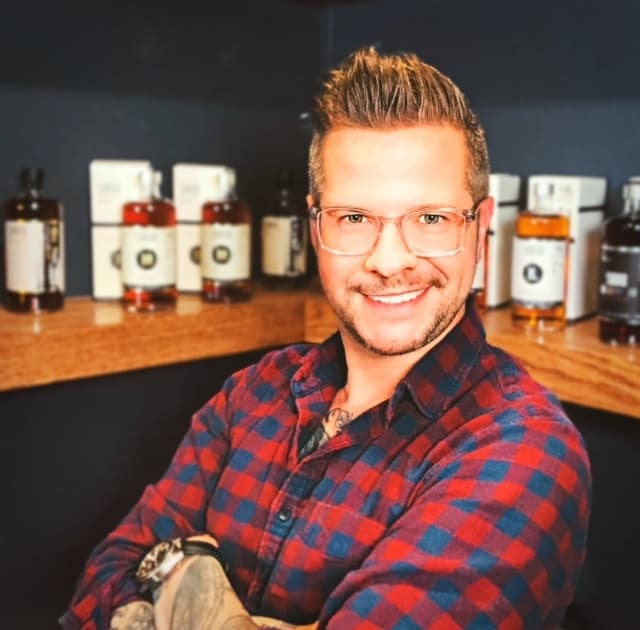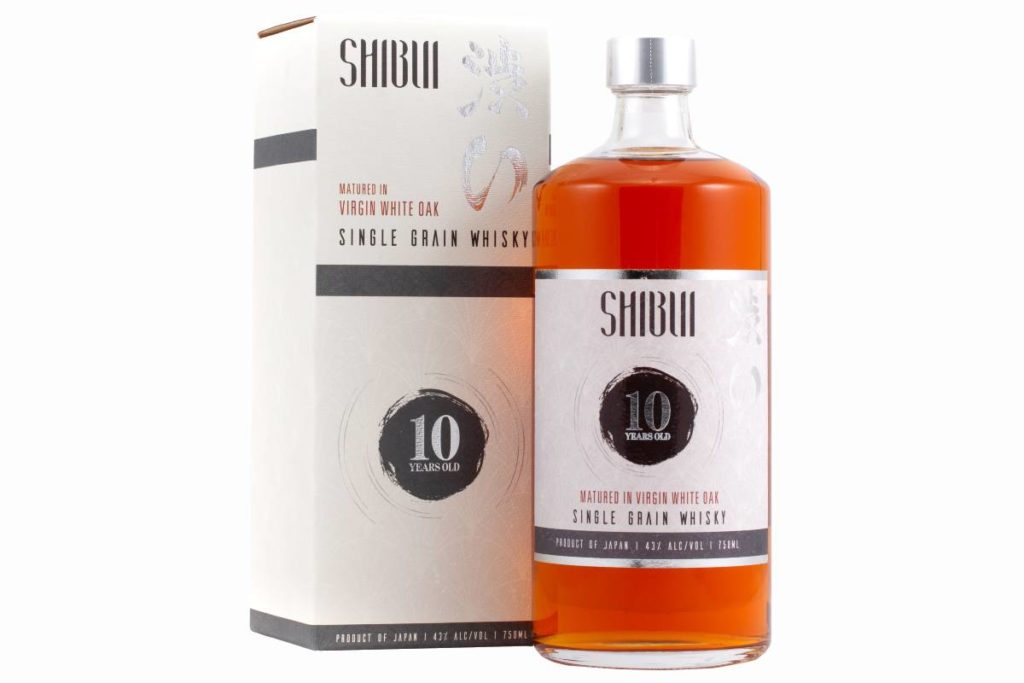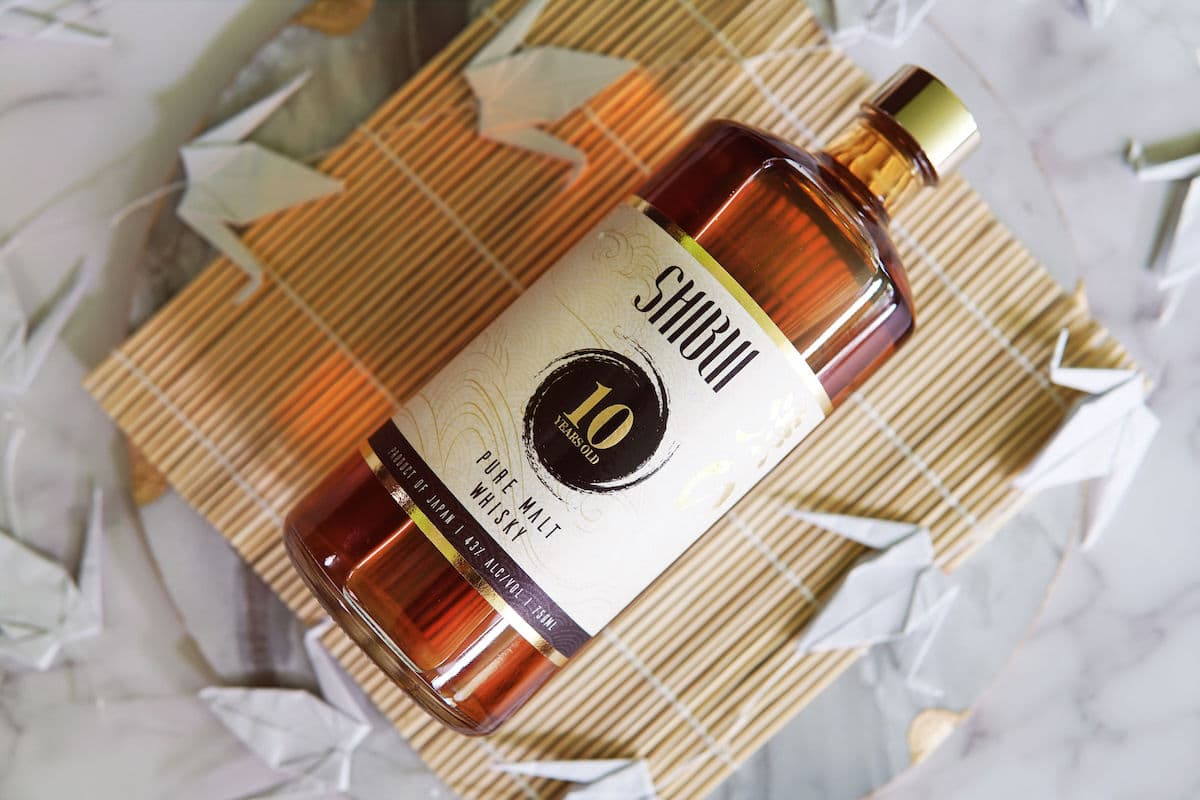It’s a familiar story for anyone who’s ever coveted a bottle of Taketsuru Pure Malt 17 or stashed away a Yamazaki 12-Year for safekeeping. In 1918, a Japanese student named Masataka Taketsuru traveled to Scotland to study organic chemistry at the University of Glasgow before apprenticing at a string of whisky distilleries. Upon returning to Japan, he applied his newfound knowledge to help establish Suntory and Nikka, the two distilling titans that went on to define Japanese whisky and continue to dominate the category today.
Considering his influence, it’s almost impossible to imagine Japanese whisky without Masataka Taketsuru. But that’s precisely what Shibui, a new sourced whisky brand that launched in October of 2020, is doing.
The Grain of the Land
Nicholas Pollacchi, who serves as co-owner and Head of Global Whisky for Shibui’s parent company, IND Beverages, could be thought of as the anti-Taketsuru. He’s a Scot who spent the last 20 years in the beverage business, working as a PR manager for the likes of Macallan, Highland Park and Glenrothes before launching a consulting business that had him working with Kavalan and Nikka.
As he looked eastward, Pollacchi noticed that his expansive definition of whisky—“the grain of the land being distilled and matured in oak”—didn’t apply to Japan.

“Whisky’s colloquial,” says Pollacchi. “If you go to a bar in Scotland and say, ‘Give me a whisky’, you’ll get a blended scotch or a single malt from Scotland. If you go to a bar in Kentucky and say, ‘Give me a whiskey,’ they’ll pour you a bourbon. You’ve asked for the same thing, but you get two different variants of what that means to somebody.”
This is not, however, the case in Japan, which Pollacchi sees as a consequence of Taketsuru’s famous trip.
“[Masataka Taketsuru] came back to Japan and said, ‘Stop what we’re doing, we’re doing it all wrong, let’s do what they’re doing in Scotland.’ So, they started to buy their cereal from Scotland and shipped it to Japan. They had their stills made in Scotland and shipped them to Japan. They found places in Japan that looked like Scotland to go build distilleries in.”
As a result, Japanese whisky emerged as something that didn’t express the local agricultural product as was the case in Scotland, Ireland, Canada and the United States. Now, a century later, Pollacchi and Shibui are trying to change that.
Shibui’s Okinawa Range
The Japanese had been distilling their “grain of the land” for centuries pre-Taketsuru, in the form of shōchū and also awamori, a rice-based distillate that’s unique to Okinawa and distilled from long grain indica rice. According to Pollacchi, Okinawa has a 600-year-old history of distilling awamori, and as a result hosts distilleries that are far older than those built by Nikka and Suntory. Two of the three Okinawan distilleries that Shibui partners with indeed pre-date Taketsuru: Shinzato, founded in 1846, and Masahiro, established in 1883 (the freshman of the bunch, Kumesen, sprung up in 1952).

This trio is responsible for Shibui’s Okinawa Line, a range of 100% indica long grain rice whiskies that are distilled, matured and bottled in Okinawa. To create these single grain whiskies, which range in age from eight to a whopping 30-years-old, Shibui’s distilling partners employ an indigenous black koji to ferment their rice. Thanks to its high citric acid content, black koji enhances the flavors of the rice mash, producing what Pollacchi calls “a big, bold, son of a bitch,” as opposed to a light or delicate rice spirit. After distillation, the rice spirit is then aged in casks including ex-fino and manzanilla sherry, ex-bourbon American oak or virgin European oak, depending on the expression.
“You just end up with this beautiful array of tropical fruit notes: pineapple, peaches, coconut ice cream; it’s stupidly good and there’s nothing like it,” says Pollacchi of the process’s end results.
Aside from making delicious and distinct whisky, the Okinawa range serves as a kind of peek into an alternate universe. “This to me is what Japanese whisky would have been had one person not visited Scotland for two years,” Pollacchi says.
Shibui’s Niigata Range
However, Shibui’s efforts go beyond finding “the grain of the land.” Its other product line, the Niigata Range, is a collection of 100% wheat or 100% malt whiskies that are created by blending together scotch whisky and Japanese whisky. According to Pollacchi, the heated competition between Japan’s major whisky distillers has made them unwilling to share casks for inter-distillery blending, which is a common practice in Scotland. As a result, Japan’s blenders have had to turn to Scotland for blending components.
“Our Niigata range of whiskies are a celebration of these master blenders, who not only have to make their own spirit in Japan, but when it comes to blending different flavor profiles have needed to use other world whiskies to do that,” says Pollacchi.

The Niigata range, which is named after the Japanese city where Shibui’s distilling partner is located, consists of the 100% wheat Grain Select, the 100% malted barley Pure Malt, and the 100% malted barley Pure Malt 10-Year-Old. All are made by blending Japanese and scotch whiskies, and as a result the company refers to them as “world whisky blends” rather than Japanese whiskies. The Niigata Range expressions are aged in ex-bourbon and oloroso sherry casks before a finish in mizunara oak, a rare and hard-to-use wood that’s indigenous to Japan and prized for the spicy, incense-like flavor it imparts.
“I talk about it like it’s the Big Lebowski,” says Pollacchi of the mizunara finish. “It’s the rug that ties the room together, the one thing that makes it undeniably Japanese.”
“What Japanese Whisky Could Have Been”
Shibui’s quest to redefine Japanese whisky is currently undergoing a stress-test in the U.S. As of spring 2021, Shibui’s products were stocked in 26 U.S. states: by the end of the summer, Pollacchi expects them to be available in all non-control states. And among the nine expressions that together comprise its Okinawa and Niigata lines, there’s a wide diversity of price points. Its most accessible expression, the Niigata 100% wheat Grain Select, retails for around $49, while the Okinawa 30-Year-Old Rare Cask commands a price tag of over $1,000.
If the effort proves successful, perhaps we’ll be hearing the names Shibui and Pollacchi in the future annals of Japanese whisky.
“I think it’s so interesting that it’s a Japanese man who went to Scotland who then reshaped how Japanese whisky was being made,” Pollacchi says. “I would love it if it’s a Scotsman going to Japan that helped reinvigorate and understand what Japanese whisky could have been.”
Could—and still might be.




I have been enjoying this 10 year old and is is distinctly unique. New profiles like this are a rarity. Yiu wont mistake the flavor for any other whiskey. Bravo
Whitey people capitalizing on minorities. This whisky is not real Japanese whisky.